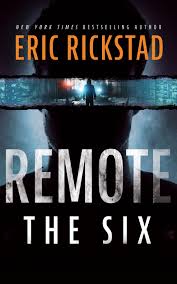Criminal profiling’s meteoric rise in pop culture came with Thomas Harris’s novel and its film adaptation THE SILENCE OF THE LAMBS. We all know the film and the book. We all love both. I know I do. And I love the stellar prequel, RED DRAGON, just as much.
In both films and books, the character Jack Crawford heads the FBI’s Behavioral Science’s Unit. In RED DRAGON, Crawford uses Agent Graham — who has an innate skill to get into the mind of a killer and “profile” him — to track down the Tooth Fairy killer. In THE SILENCE OF THE LAMBS, Crawford tasks young FBI agent Clarise Starling to interview serial killer Hannibal Lecter in prison in what is perhaps the most iconic series of cat-and-mouse exchanges ever put on film.
Jack Crawford is actually based on John E. Douglas, a real FBI agent known best as a Criminal Profiling pioneer. In 1972, Douglas formed and oversaw the FBI’s Behavioral Analysis Unit, the precursor to its Behavioral Science Unit. After his FBI retirement, he made a successful career as the author of books about criminal profiling. He was sought as an expert speaker for decades. More recently, the superb series MINDHUNTER was based on Douglas’s early years as a profiler and the creation of the Behavioral Analysis Unit. I, and many other fans of the show, will never forgive its cancellation after just two seasons.
I eat up all the profiler lore and pop culture mythos as much as anyone. That’s why I had so much fun writing the lead character, FBI Special Agent Lukas Stark, in my new novels, REMOTE: THE SIX and REMOTE: THE FIVE, an FBI Serial Killer Manhunt novel. Stark dismisses profiling and the FBI’s Behavioral Science department out of hand. He doesn’t believe Behavioral Science is science at all. To him, it’s educated guessing and theorizing with no real basis in actual science and of little help in solving cases. He faults movies and novels like THE SILENCE OF THE LAMBS and other pop cultural phenomena for elevating the notion that profiling is more useful in helping to solve criminal investigations than it is in reality. He is a skeptic and a pragmatic professional who finds and follows evidence. It is fun to debunk what is in part a myth. And Stark is right in a lot of ways.
While he believes profiling might be peripherally helpful to a small degree in helping to understand criminals and serial killers in general, it rarely actually helps catch a real serial killer. The profiles of killers can often be far, far off the mark when aligned with the killer him or herself.
For Stark, physical and forensics evidence catches killers and builds cases against them, not educated guesses at what behaviors or personality traits a killer might have. Stark backs his argument by revealing that none of the highest profile serial killer cases have ever been captured due to profiling. In fact, the arrest of these killers is often a convergence of investigative skill and luck.
Ted Bundy was caught because an escaped victim identified his VW Bug, which later led to a traffic stop. The Son of Sam was caught because he had a parking meter fine late at night near the location of one of his slayings, which led to police eventually arresting him. The BTK serial killer was caught decades after his killing spree because he started to write to the police about his killings. The more recent arrest of Golden State Killer was caught due to DNA forensic evidence.
Agent Stark posits that if Ted Bundy had been profiled at the time of his crimes, a profiler would likely have deemed Bundy a basement dweller, single, an odd loner, poorly educated, low IQ, and socially awkward, and NOT the handsome, charming, socially adept, educated law student that he was— a man involved in a long-term relationship. I had fun working completely against and dismantling what Stark sees as a pop culture myth that has become almost its own industry with all the profiling shows and novels.
In THE SILENCE OF THE LAMBS, Lecter speaks to Starling about the Buffalo Bill and it seems he’s profiling Buffalo Bill, giving Clarise insights into Bill’s motivation and behavior and personality. But, Lecter isn’t really profiling Bill at all. Lecter was Bill’s psychiatrist so has first-hand knowledge of Bill’s most intimate private life. He’s simply feeding her information he is privy to, which is not the same as profiling.
It’s not just pop culture that has highlighted profiling as being far more important in serial killer and other criminal cases—there are many individuals who were held in high esteem as “real” profilers who “helped solve” major cases for law enforcement who were later found out to be entire frauds making a living off of the pop culture myth. Largely because profiling was seen as a legitimate means of criminal investigation and was extremely popular in the mainstream in the 1980s and 90s, law enforcement and the mass media were easily duped by cons such as Richard Walters. Walters made up a biography claiming he’d been involved in solving many cases. Networking at conferences and lying about his role in criminal profiling as the “industry” was taking off, he was accepted into the American Academy of Forensic Sciences. This gave him a huge feather in his cap and led to his being an “expert witness” in murder trials. He was featured on 48 Hours and 20/20 television shows. In fact, though, he was no expert at all, and his story shows how easily career law enforcement professionals, prosecutors, and the media are easily deceived by a charming liar at the height of a pop culture zeitgeist.
So, in my new novels REMOTE: THE SIX and REMOTE: THE FIVE, when pragmatist Stark is forced by his superior and the FBI Director to work with Giles Garnier, a Remote Viewer who claims he can view people and places happening anywhere with just his mind, Stark wants none of it. He sees Garnier with great skepticism, a fraud who is just an amped-up version of a profiler. He leaves it to Garnier to prove to him that he’s for real and back up his claims of being a remote viewer with facts and evidence.
But, what happens when the remote viewer does start to prove he can do what he claims?
And it turns out that the serial killer is a remote viewer too, and can see every move Stark makes trying to catch him in the ultimate cat-and-mouse serial killer hunt ever?
***


















